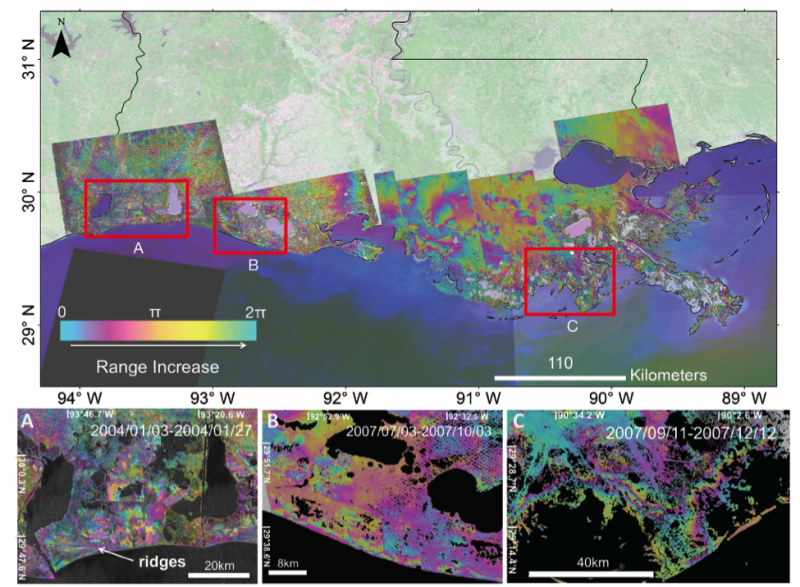New study shows impact of man-made structures on Louisiana's coastal wetlands

As Louisiana's wetlands continue to disappear at an alarming rate, a new study has pinpointed the man-made structures that disrupt the natural water flow and threaten these important ecosystems. The findings have important implications for New Orleans and other coastal cities that rely on coastal wetlands to serve as buffer from destructive extreme weather events.
Scientists at the University of Miami (UM) Rosenstiel School of Marine and Atmospheric Science found that man-made canals limit the natural tidal inundation process in roughly 45 percent of the state's coastline, and disruptions from levees accounted for 15 percent.
"This study demonstrates that human infrastructure development along coastal areas have long-term consequences on the ability of coastal wetlands to adapt to sea-level rise and other processes that reduce the size of coastal wetlands," said Talib Oliver-Cabrera, the study's first author and a UM Rosenstiel School Ph.D. student.
Coastal wetlands in Louisiana are economically and esthetically important by providing storm protection, flood control, and essential habitats for a myriad of wildlife. They support economically important commercial and recreational fishing industries, tourism, and oil and gas industries.
Man-made structures, such as levees and canals, have changed the regular patterns of tidal inundation in coastal wetlands and have become a main element in determining coastal wetland distribution.
Using a remote sensing technique, called Interferometric Synthetic Aperture Radar (InSAR), the researchers analyzed water-level changes in Louisiana's coastal wetlands that occurred due to tidal inundation. Based on the detected changes observed, they were able to determine the extent of tidal inundations along the Louisiana coast.
"Our analysis showed that tidal inundation along Louisiana's coastline is restricted to narrow areas due to the presence of man-made canals and levees that disrupt the regular tidal flow through the coastal wetlands," said study co-author Shimon Wdowinski, a research professor of marine geosciences at the UM Rosenstiel School. "To protect these valuable resources, it is important to study them and quantify what is causing wetland loss in coastal Louisiana," said Wdowinski.
The study, titled "InSAR-based mapping of tidal inundation extent and amplitude in Louisiana Coastal Wetlands," was published in the May 7 special issue of the journal Remote Sensing. The study's authors include: Shimon Wdowinski and Talib Oliver-Cabrera of the UM Rosenstiel School.
Provided by University of Miami





















